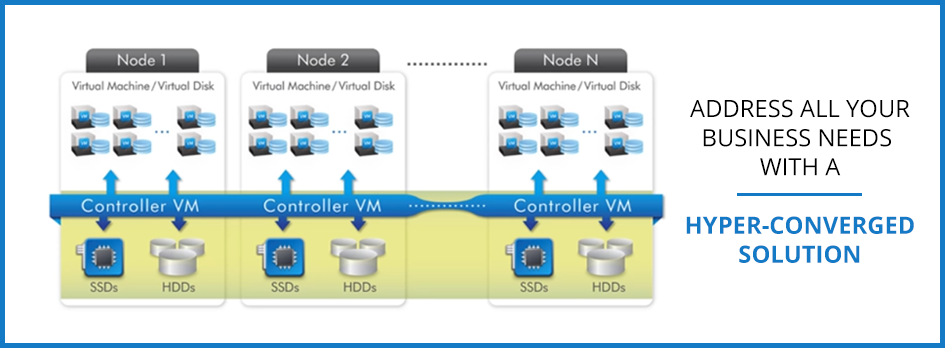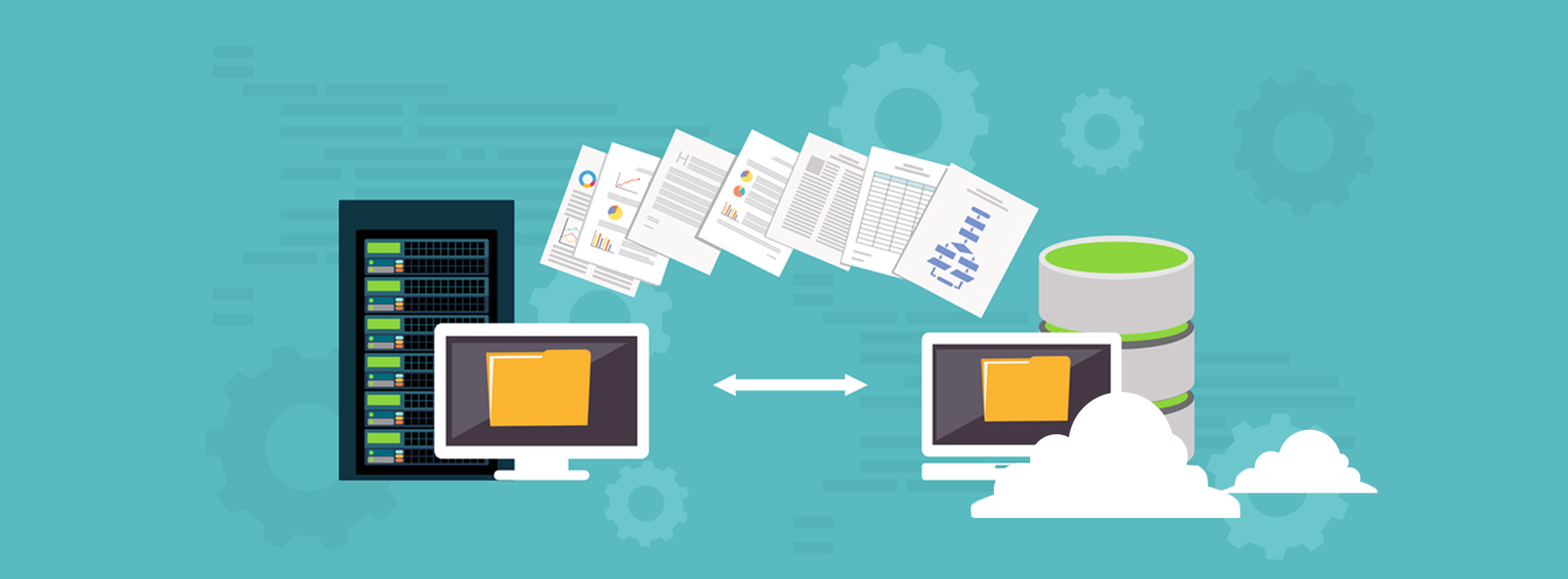HOME | ABOUT US
HOME | ABOUT US

Let me start with some questions.
Is the technology that you use at your business keeping pace with your needs or giving you frequent headaches?
Are you in search of something that is more cost-efficient and that has better redundancy?
If your answer to all the above questions is a YES, then a hyper-converged solution is what you are looking for. It holds the power to simplify the way your data centre is managed and can also provide a clever and effective way to regain your stronghold.
This IT framework is responsible for the unification of the computing, storage, networking and software into a single system. A simple data centre and increased scalability are two things that can provide you with a new environment with a growth factor that your business needs!
Do you know?
According to Gartner Inc.,
Worldwide integrated systems revenue was expected to rise by 18.4 per cent from $10.2 billion in 2017 to $12.3 billion in 2018 based on previous market trends.
So what are the benefits that your business can see in adopting a hyper-converged infrastructure?
A merger of the compute and storage will help reduce the initial footprint and investment of your new private or public cloud. The hyper-converged cloud is easier to run and maintain when compared to managing numerous components.
This reduces the need for an expensive and specialized staff.
While cost is not the only factor to consider when you design your IT solution, also you won’t be benefitting if you have the fastest data centre and not the profit margin to run it.
Hyperconvergence saves you big bucks by helping you reduce the large infrastructure purchases every year. Low-cost commodity hardware is used and the size of the data centre is made small in easy-to-manage steps.
For eg: Earlier if you had to run and manage ‘n’ number of servers, then switching to a hyper-converged infrastructure will cluster all your resources in less than ‘n’ number of servers. This will allow you to reduce the cost of entry as you will only pay for the amount of space that you need at present and not what you will need in the future.
The cost of ownership of an HCI compared with legacy infrastructure is always less.
Some built-in features that you get with HCI help in increasing the productivity and security of data storage at your workplace.
Features like
make full and secure data recovery as sure as God made little green apples!
The software-defined nature of HCI will also allow your organisation to use public cloud storage as a target for backups.
One more benefit that you get is that in case an appliance goes down, you can restore it immediately without any hassle. Your system won’t have to remain closed for a long time. For some organisations, even a shut down for a few hours can mean much. If you are among them, then hyper-converged infrastructure is for you.
An HCI will ensure that your performance and availability don’t suffer much when such a thing happens. All thanks to the scale-out model that relies on data being spread across multiple nodes throughout the data centre.
Automation becomes impossible in many legacy IT infrastructures as they are so varied and complex. On the other hand, an HCI works on the principles of the software-defined data centre (SDDC), which virtualizes everything including storage, servers and supporting services. Hence automation becomes easy to implement by using management tools such as scheduling.
Working in an HCI, your IT guy won’t have to worry about creating automated structures with hardware from different manufacturers or product lines. Everything is included in a single environment.
Your business will have the privilege to stay agile and competitive when automation will help your organisation increase its efficiency.
An HCI can be scaled easily as it is totally based on software. Remember the LEGO blocks? Hyper-converged infrastructure uses the same approach to scalability.
Each block is a self-contained unit designed to include every type of hardware that the data centre needs to maximize agility and compatibility.
You can simply connect a new node to the cluster when you want to add some additional resources to the cluster.
The hyper-converged system will also let you scale compute and storage separately. The identification and integration of the new unit will be automatic.
The manual work of specifically provisioning, configuring and deploying more storage or compute capacity will be eradicated with the help of HCI.
Some other benefits will be:
Hyper-converged solutions are taking up more space in the market and are becoming the first choice for many in place of the legacy infrastructure that was used earlier. The question for them no longer is what the benefits are. Your competitors now want to know how to take more benefits of the hyper-converged infrastructure.
To conclude:
Hyperconvergence can seem to you as a new approach, but the benefits that it can bring to you can certainly not be ignored. This can eliminate the compatibility and integration issues that arise in multi-vendor data centres and leave you only with a single vendor to deal with.
Adopting the hyper-converged solutions can help your organisation and can turn out to be just the ticket that your business needs. You can talk to our experts at GBB any time when you need assistance or help in selecting HCI over your current infrastructure.
GBB is an end to end IT Infrastructure Solutions and Services Company based in Hyderabad. We focus on helping customers transform their businesses through the innovative use of technology. We have the aim of providing our clients with the best service by partnering with the best vendors in the respective areas.
HOME | ABOUT US

We generate tons of data every day. We send and receive this data to various people and institutions multiple times as well.
Now, when so much is happening, cloud migration makes sense. Right?
But first, here’s what cloud migration really means:
“When data related to a business, its applications, and all its components are stored on the cloud or moved from one cloud service to another on the basis of the business’s infrastructure, it is known as Cloud Migration.”
The reason most people today would opt to become a member of the cloud community is:
Have you been thinking of migrating to cloud or considering cloud migration but are not sure how? Well, read along to find out the process for successful cloud migration.
The migration process can be divided into 3 main stages. Along with that, there are multiple sub-stages, which will also be covered here.
This is where you start focusing on what you’re reading.
Ask yourself these questions to establish the reason you want to go ahead with the cloud migration.
To answer the first question, if you said yes to both the questions then you should go ahead and invest in a Private or a Public cloud.
While for the second question, if you do need a cloud that will give your business significant benefits, you should invest in a Hybrid cloud.
Sure, you need to improve the services that your IT department takes care of. While doing that, you need to remember that your staff is going to be using the IT services and if they don’t understand how they are supposed to work with it, there will be chaos.
Appropriately trained staff members would mean a knowledgeable group of personnel. Factors such as fear, uncertainty, and doubt (generally known as FUD) that may surround your team will disappear.
Nobody wants a complicated cloud migration. You already know what qualities you want in your accomplice, still, here’s a list:
Sounds easy, right? Well, it could be with proper management.
In your mind, you might have certain objectives that you have defined for your business. These goals need to be put on paper, discussed with your team, and allocated to the employees at an early stage to avoid confusion.
Determining the number of cloud instances you want to incorporate in your business, who will have access to which system, and the amount of access for each of the employees, will go a long way in making the cloud migration successful.
You would have to remember the below 5 Steps during the migration stage:
Complications may arise when you start transferring the data from On premise set-up to Cloud.
But you don’t have to be worried. Today, there are various tools that are available in the market to make your move easy. With just a little research you can find these tools or for a simpler solution, you can contact your cloud migration service provider.
There are multiple factors that will determine the type of storage your business needs. You can decide on a suitable option by assessing the following:
While you’re going through the transfer you don’t want your business to be disrupted, correct? For that, there are two options that have been made available, namely:
The following methods can be used to transfer your applications to cloud-
To improve the efficiency with which you use the cloud, you will have to stay in the loop of understanding, overseeing, analyzing, and observing. An optimized cloud system will reduce management costs.
With the large amounts of investments you have made for the cloud migration, you want to be taking full advantage of it. Try exploring additional benefits that the cloud has to offer.
There are various tools that are available to help you in the future and provide continuous guidance on how to efficiently use the cloud. You can pick the tool and the package that best suits your business needs. To make things a tad bit easier, here are some of the best monitoring tools available today:
That’s it. As long as you follow these steps, your cloud migration can be carried forward smoothly. Form strategies and plans before moving forward, otherwise things could go wrong and you could be left with a partially working cloud.
The process of could migration is long and tedious. You can talk to our experts at GBB and let us help your business.
GBB is an end-to-end IT Infrastructure Solutions and Services Company that focuses on helping customers transform their businesses through innovative use of technology. By partnering with the best vendors in the respective practice/area of our focus, we ensure that our clients get the best service. We take great pride in saying that GBB has various technology partnerships with AWS, Azure & Netmagic.
Want to know how our solutions can help your business?